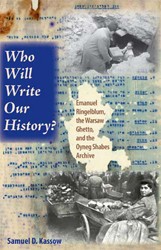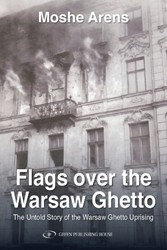The Warsaw Ghetto, like much of the Holocaust landscape, no longer exists. It was destroyed in May 1943 as the Nazis brutally quelled the ghetto resistance. There are still fragments of its walls and cobblestones, but the essence of the ghetto, the doomed sealed district of Warsaw that contained at its height almost 500,000 Jews, is covered over by earth, asphalt, new buildings and layers of indifference and ignorance.
In this encyclopedic and impressive work, the Polish authors, one a psychologist and the other a scholar in literature and culture studies, achieve something monumental. They reconstruct the history, the life and death of a city that no longer exists. If we want to see and feel that lost world that stood from November 1940 until mid-May 1943, the authors believe we have to dig it out almost literally but certainly conceptually from under layers of indifference and intellectual amnesia. And the story must be constructed from the multiple and nuanced perspectives of the victims, from the inside out. The Guide is therefore based on many individual testimonies, sources, and documents. The book attempts to reconstruct the topography and setting of the ghetto experience — to capture the details of everyday life and as far as possible to convey the atmosphere of the ghetto, the shifting mood and pulse of a sealed city under extreme duress. In this work the private experiences of ghetto residents are intertwined with the overall plan from the viewpoint of the official community and the history of the extermination as it is implemented by the Nazis.
The book is very rich in detail. It seems as if the authors are reluctant to leave anything out lest they prevent the victims from finding a locus in memory. In fact, the only place the inhabitants of the ghetto can still be found— along with their apartments, the streets they lived on, the places they played, worked and prayed in, and their suffering and deaths — is a place in our memory. The Guide, therefore, encompasses a wide range of topics from food supply to education, religious activities to cultural life, social welfare to the economy. Individual chapters deal with the Judenrat, the Jewish police, smuggling, the Ringelblum archive, deportations to Treblinka in July 1942, the possibility of escape, and the famous uprising in April 1943. It also offers detailed original maps that identify the locations of businesses, social institutions like the Janusz Korczak orphanages, medical facilities, important streets and the like.
This is not an easy book to read, and it is not for everyone. But if the reader is willing they will meet within its pages the shadows of Warsaw’s Jews. It offers us the extraordinary opportunity to journey back through historical time and place to experience just a small bit of what it was like through historical reconstruction. The Jews are gone but “behind the screen of the houses and streets of today’s Muranów, their hidden presence will make itself felt.” The authors are to be applauded.




